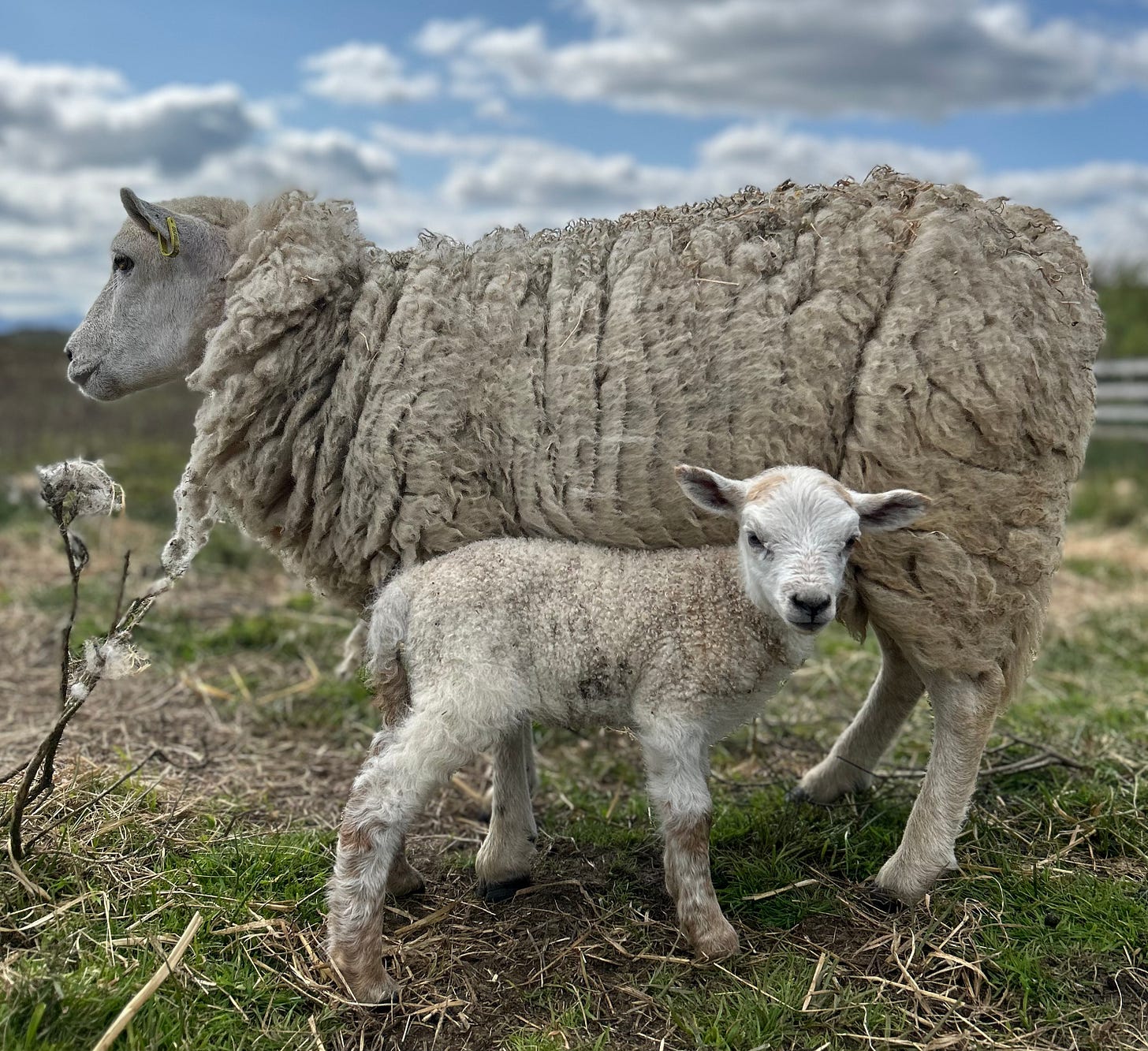I really don’t know how I thought I’d find the time or the brain power to sit down and come up with something coherent in the middle of lambing. I managed neither, hence I am a week late with this, my apologies...
Lambing is the high point of the shepherding year and, even in a flock as small as mine it is also the most demanding, stressful, and exhausting time, when you’re running on very little sleep at the busiest time in the farming calendar, with the added weight of responsibility for all the fragile new life that is not just the make or break of your year’s success, but so much more than economic outcomes, each one is a precious new life that we give so much of ourselves to. To shepherd is not just to herd sheep, but to watch over them, protect and nurture them just as they feed, clothe, trust and follow us. Shepherds have traditionally been nomadic people, moving with the flock, living and sleeping among them, always present, as one with the flock, always on watch, thus domestic…

